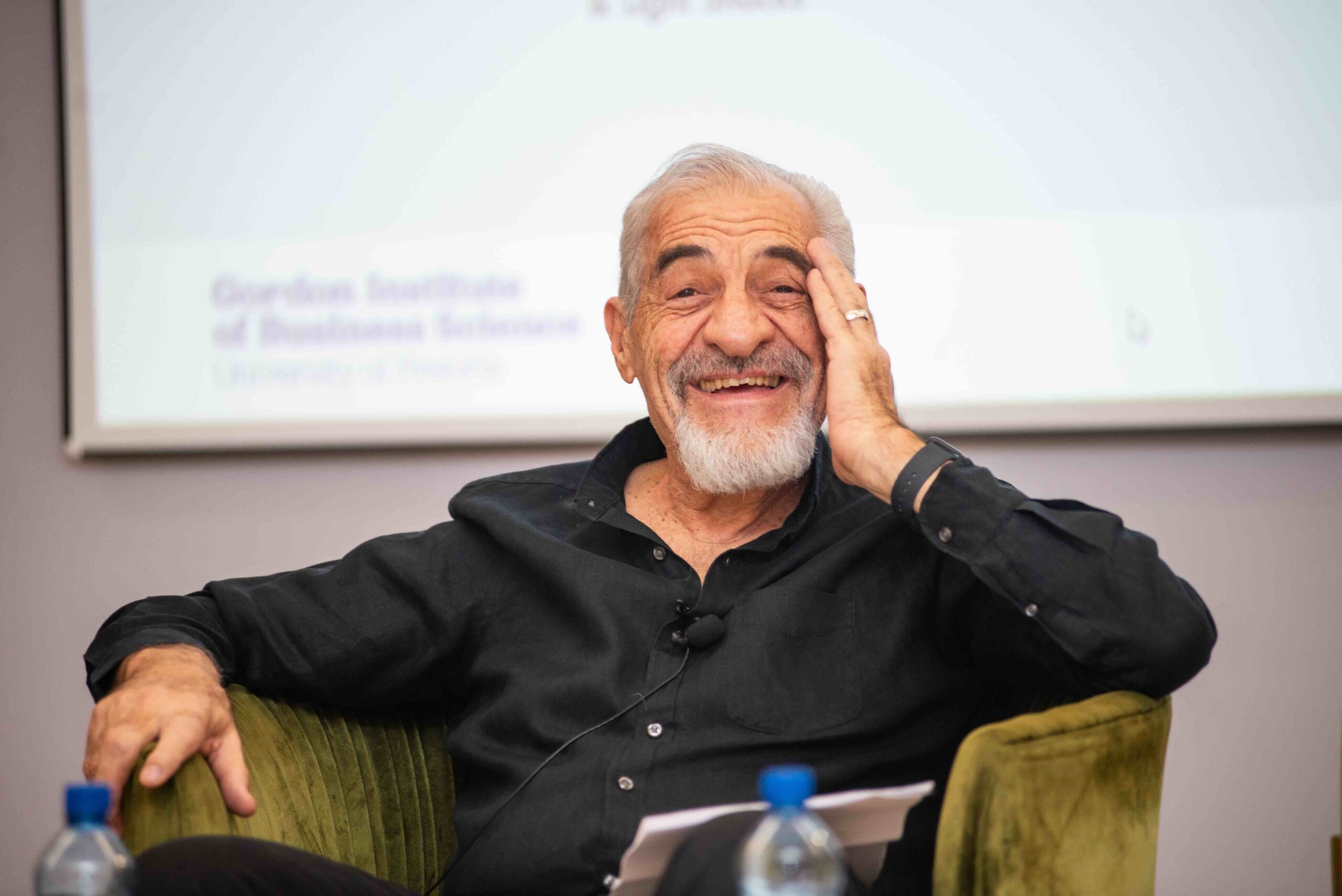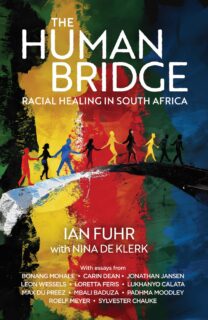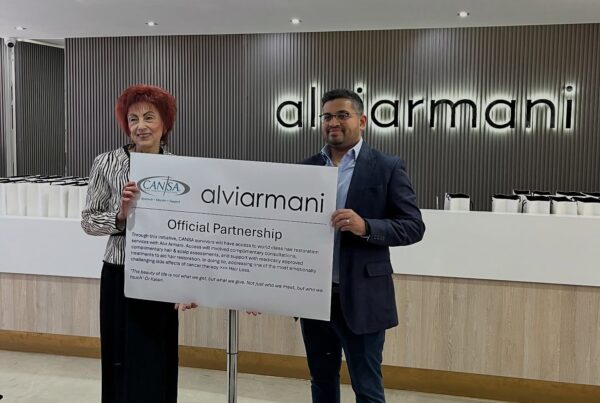South Africa. In this interview we spoke to Ian Fuhr, founder of the successful beauty chain Sorbet and The Hatch Institute. Ian is on a quest to transform mindsets and facilitate racial healing. A successful entrepreneur, author, and cultural transformation expert, he’s just published his third book called The Human Bridge. Racial Healing in South Africa. The book is co-authored with Professor Nina De Klerk.
Building a Human Bridge for Racial Healing
- In this article, we discuss Ian Fuhr’s personal life lessons and his own racial healing journey in South Africa.
- Ian shared his plans for a Human Bridge Movement to promote racial healing.
- We also look at the impact of racial trauma on longevity.
A Journey Over Turbulent Times
Ian Fuhr is a serial entrepreneur. His entrepreneurial journey began at an early age when he was thrust into business by his older brother. After a trip to the United States and encountering Kmart for the first time, Ian’s brother Rodney encouraged him to join the business and help open the first Kmart store in South Africa.
Despite the political turbulence at the time, the two brothers opened a Kmart store during the summer of 1976. Just after the Soweto uprising. It was so popular, the police thought riots were taking place and arrived at the store.
A white person with no credibility
Ian recalls how he was the only white person in the business. He also admits openly that he was clueless about the realities of life for his black staff and black customers.
“I was the only white person in the business. I was thrown into the deep end and had no credibility with the staff. I was too young, too white, and too stupid to know what was going on.”
He recounts how he needed to find someone to help him navigate township life. He found that person in Ralph Mamela.
“When one of my managers didn’t come to work I discovered he was promoting a consumer boycott of white owned stores. I felt betrayed. I asked him why he was working against our business. He explained to me what it took for him to get to work everyday, the harassment and hardship he had to endure.”
Ian adds. “He told me that he wanted to work, but he said, “Ian, for me it’s freedom first and work second. I’m really sorry, but I would do it again if the opportunity arose.”
“This had a very profound impact on me. And I realized that I had to start understanding what was going on. So I asked him to show me, to teach me, to mentor me.”
A world unseen by white privilege
Ralph told Ian he would only mentor the white businessman so long as he was willing to go to Soweto and see what really was happening in the country.
“To be honest, I was anxious about this. Soweto was dangerous and very volatile at that time. But I conceded. There I discovered a whole world unseen by my white privileged life,” says Ian.
It was the beginning of a life-long journey of understanding racial polarization and discrimination in South Africa. “It didn’t take long for me to realize my white privilege.“
Then in 1991, three years before the end of Apartheid, Ian left Kmart, which had been renamed Super Mart. He created a race relations consultancy called Labour Link. Here he focussed on improving organizational culture and race relations in the workplace.
Beauty with a Purpose
It was during this time that Ian started to envisage the kind of company he wanted to establish in South Africa. He identified a gap in the beauty industry.
“I had a culture in mind. I knew exactly what culture I wanted before I even started Sorbet. In fact, Sorbet was created because I had a cultural framework to test.”
Ian jokes about the fact he was a white male who knew nothing about women’s beauty at the time.
Challenging inequality
He had worked with black people all his life, but discovered early on there were very few black beauty professionals working in the beauty industry at that time.
When he asked other business owners in the industry why there were no black resources, he was told white women didn’t want to have black therapists working on their skin.
This astounded and upset Ian. He also didn’t believe it was true. And so it became a mission for him to challenge the status quo. He started by hiring and training black beauty therapists.
Promoting Opportunities for Women
Over time the Sorbet Group became very successful. From just six stores in August 2005 , to 22 stores by 2009. When the group was eventually sold, there were over 200 Sorbet stores nationwide.
Culture-neering across the racial divide
Ian employed mostly women and his franchise store model was structured around women entrepreneurs and therapists. He showed a personal commitment to empowering black women.
He developed an extraordinary service philosophy for the Sorbet Group. For example, if customers were not satisfied with their service, they did not have to pay. And if they didn’t like a product they purchased, they could bring it back for a full refund, no matter how much was used.
As Ian forged a new approach to beauty retail in South Africa, he was surrounded by a diverse array of women from all walks of life. He applied his desire for racial equality to his company operations.
If there was any racism exhibited by a customer, Ian would personally engage with the customer. He admits that on occasion he asked a customer to leave the store.
His group’s commitment to providing extraordinary service rather than a short-term profit orientation attracted many franchisees, 95% of whom are women, These were women who typically with business experience, rather than having worked in the beauty industry.
A family business
Ian involved some of his own family in the business, which became so successful it attracted the attention of newly founded Stock Exchange listed group Long4Life. The group bought Sorbet in 2017.
Building a human bridge for racial healing in South Africa
At this stage, Ian chose not to retire, even though he could. Instead, he dived right back in to his passion – to keep making a difference in the country of his birth.
He established the Hatch Institute, which today focuses on life coaching and business coaching for SMEs and entrepreneurs.
The Hatch Institute hopes to expand Ian’s cultural transformation philosophy across various industries through racial healing, leadership coaching, and fostering organizational cultures that prioritize inclusion and equality.
A long term commitment to healing
While South Africa has moved beyond Apartheid, Ian believes it has not moved beyond racial polarization. He feels virtually every problem faced in the country is influenced by a legacy of systemic racism and the psychological trauma it has caused to people of all races.
“I have always been interested in race relations. I have always had a need to do something about race.”
He believes that companies cannot build a strong culture in South Africa without addressing race.
“Racial healing is not a new, woke, talk shop. It is also not a ‘how-to guide’ for do-gooders. On the contrary, racial healing requires diverse people of all ages to embrace the unique and challenging complexity of racial diversity. To forge a human bridge between multiple opposing truths that can peacefully coexist.”
Crafting a road map towards racial healing
Ian says that only a sober admission of this complexity can help us heal from the open, festering wound of ongoing racism. A wound that has left South Africa with the unenviable distinction of being the most unequal country in the world.
In the book The Human Bridge, Ian and his co-author Professor Nina de Klerk craft a powerful examination of the deep-rooted causes of ongoing racial polarization in South Africa. They also propose a road map towards racial healing.
The book is enriched by contributions from influential collaborators across various sectors, who share their authentic and often emotive perspectives on racial healing.
Racial healing begins with an honest acknowledgment of the historical realities of racial injustice. This includes slavery, colonization, segregation, and systemic discrimination. Ian says this step is crucial to understanding the roots of inequality and the persistent structures that sustain it.
Racial healing promotes a better life for all
The book is the first of its kind and a critical read whether or not you’re interested in supporting racial healing in South Africa.
It’s enhanced by influential collaborators who share their authentic and often emotive perspectives on racial healing. These collaborators include Bonang Mohale, Carin Dean, Jonathan Jansen, Leon Wessels, Loretta Feris, Lukhanyo Calata, Max Du Preez, Mbali Baduza, Padhma Moodley, Roelf Meyer and Sylvester Chauke.
Ian challenges every South African to educate themselves to become more aware of race- related issues. To read, research, watch, learn, unlearn, enlighten, understand, explore, unpack, overcome and interact with people from different race groups.
And importantly, to start having those difficult conversations about racial healing.
The Human Bridge Movement: Transforming Words into Action
Our discussion concluded with an introduction to the Human Bridge Movement. This is a grassroots initiative inspired by the book. The movement aims to take the message of racial healing beyond its pages. To foster understanding and collaboration across corporate, civil society, and government sectors.
This will be activated through a variety of initiatives. These will include racial healing circles, educational programs, media projects, and creative endeavors like songs and theater productions.
Creating common ground
Ian concluded our conversation reading from his book and quotes from the chapter on The Mind of South Africa. He shared two of his favorite quotes.
The first is by Steve Biko who said “The greatest weapon in the hands of the oppressor is the mind of the oppressed.”
And then a quote from Nelson Mandela. “The purpose of studying history is not to deride human action, not to weep over it or to hate it, but to understand it – and then learn from it as we contemplate our future.”
Explains Ian, “We need to understand and accept the damage that was caused by Apartheid and our troubled history, so we can begin to heal and find common ground.
Only then will South Africans regain their position as a shining example of truth, reconciliation and healing, to the rest of the world.
References
Ian Fuhr has authored, Get that Feeling (Pan Macmillan, in 2014) and , The Soul of Sorbet (Pan Macmillan, in 2018). Then Cultureneering (Pan Macmillan, followed in 2021).
The Hatch Institute can be found here: https://hatchinstitute.co.za
The Human Bridge By Nina de Klerk & Ian Fuhr: https://ourbooksdirect.com/product/the-human-bridge-by-nina-de-klerk-ian-fuhr/
You can read more about how racism impacts longevity here:
The impact of racial trauma on health
Scientific studies have confirmed the link between racial trauma and poorer health outcomes. Here are some of the ways racial healing can promote better wellness and longevity outcomes.
1. Chronic Stress and Racial Trauma
- Systemic racism and discrimination contributes to chronic stress, which has a direct negative effect on health. Prolonged exposure to stress can lead to conditions such as hypertension, heart disease, and weakened immune function, all of which shorten life expectancy.
- Racial healing initiatives can help reduce this stress by fostering environments of inclusion, understanding, and validation, improving overall health and longevity.
2. Health Disparities and Access to Care
- Racism has historically limited access to quality healthcare for marginalized groups, leading to significant disparities in health outcomes.
- Racial healing emphasizes addressing these inequities through policy reform, education, and community programs, enabling better access to care and preventive health measures.
3. Mental Health and Longevity
- Racial trauma often results in mental health issues like anxiety, depression, and PTSD, which are linked to a shorter lifespan. In the book, Fuhr unpacks the impact of racism and inequality on the psyche and the long-term damage it brings to communities if not healed.
In the book, Ian Fuhr says when social groups are deprived of respect and dignity over time, the consequences are devastating and fuel self-hate or envious resentment.
Racism can lead to various psychological challenges such as
- Emotional distress.
- Low self-esteem.
- Depression and anxiety.
- Trauma and PTSD.
- Identity conflicts, to name a few!
This is where the role of racial healing is so important. Initiatives like racial healing circles provide safe spaces for individuals to process their experiences, fostering psychological resilience and well-being.
4. Social Cohesion and Longevity
- Studies show that strong social connections and inclusive communities are vital for longevity. Racism erodes these connections, creating division and isolation.
- Racial healing fosters understanding and solidarity, strengthening social bonds that are critical for long-term health.
5. The Epigenetic Impact of Racism can manifest in generational trauma
- Research suggests that the effects of systemic racism can influence genetic expression, potentially affecting the health of future generations.
- Healing initiatives can help interrupt these patterns, promoting healthier outcomes for descendants.
6. Lifestyle Diseases Are Linked to Inequality
Racism and inequality contribute to lifestyle diseases such as diabetes and obesity through reduced access to healthy food, education, and recreational facilities. Racial healing addresses these systemic issues, enabling healthier living environments and longer lifespans.
The bottom line
By tackling the root causes of racial trauma and systemic inequities, racial healing aligns closely with the goals of longevity. It not only improves individual health outcomes, but also creates healthier, more equitable societies where everyone has the opportunity to thrive.




![women [longevity live]](https://longevitylive.com/wp-content/uploads/2020/01/photo-of-women-walking-down-the-street-1116984-100x100.jpg)










